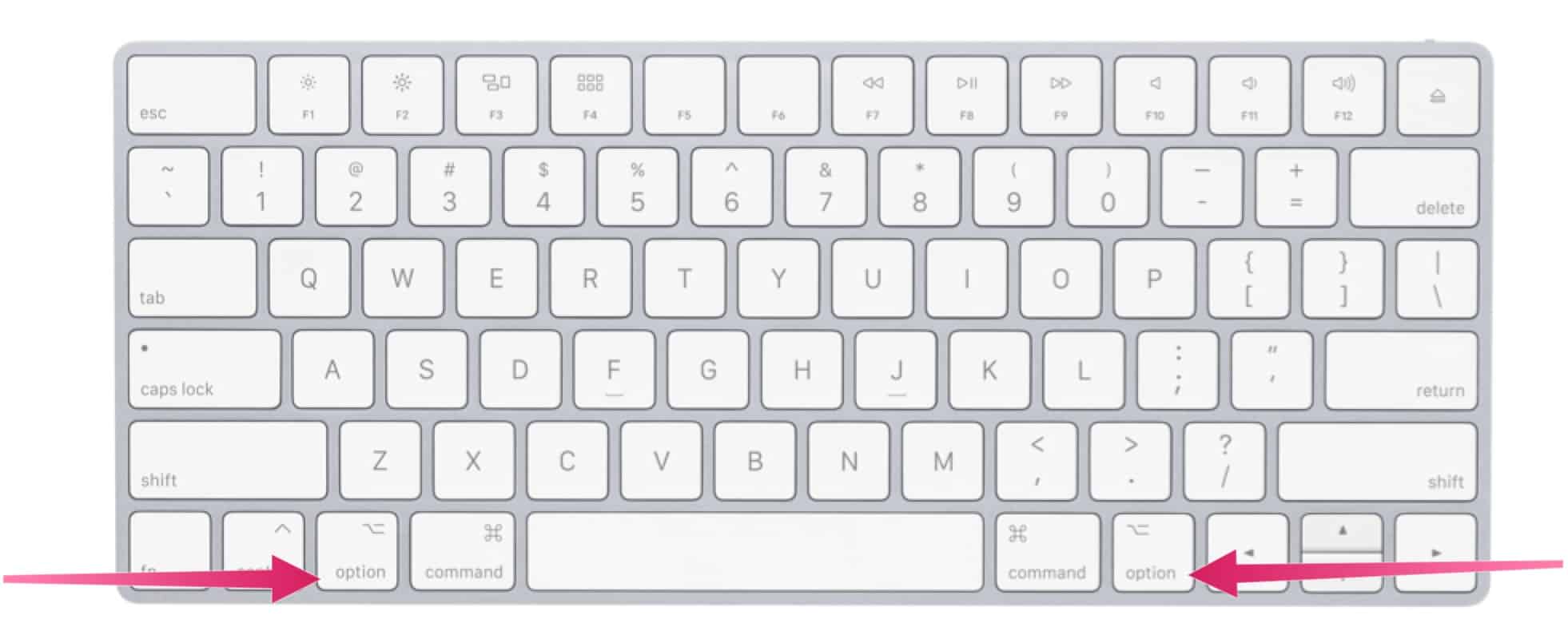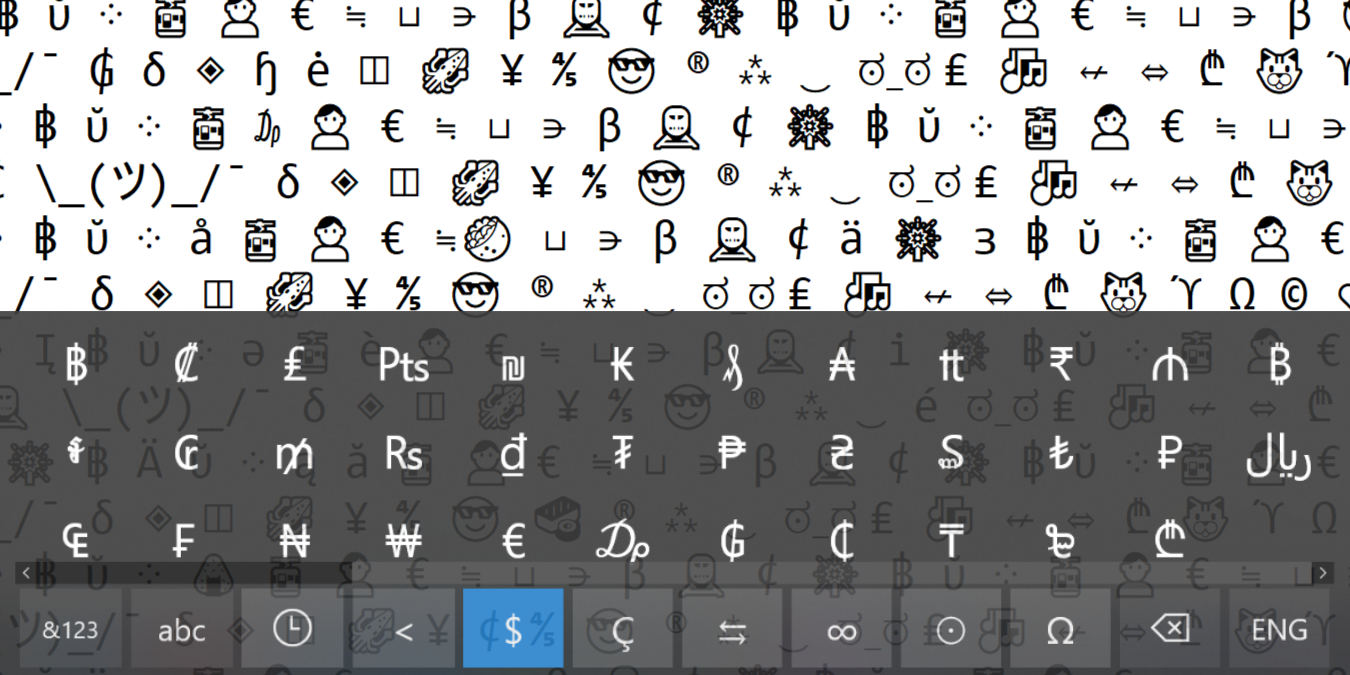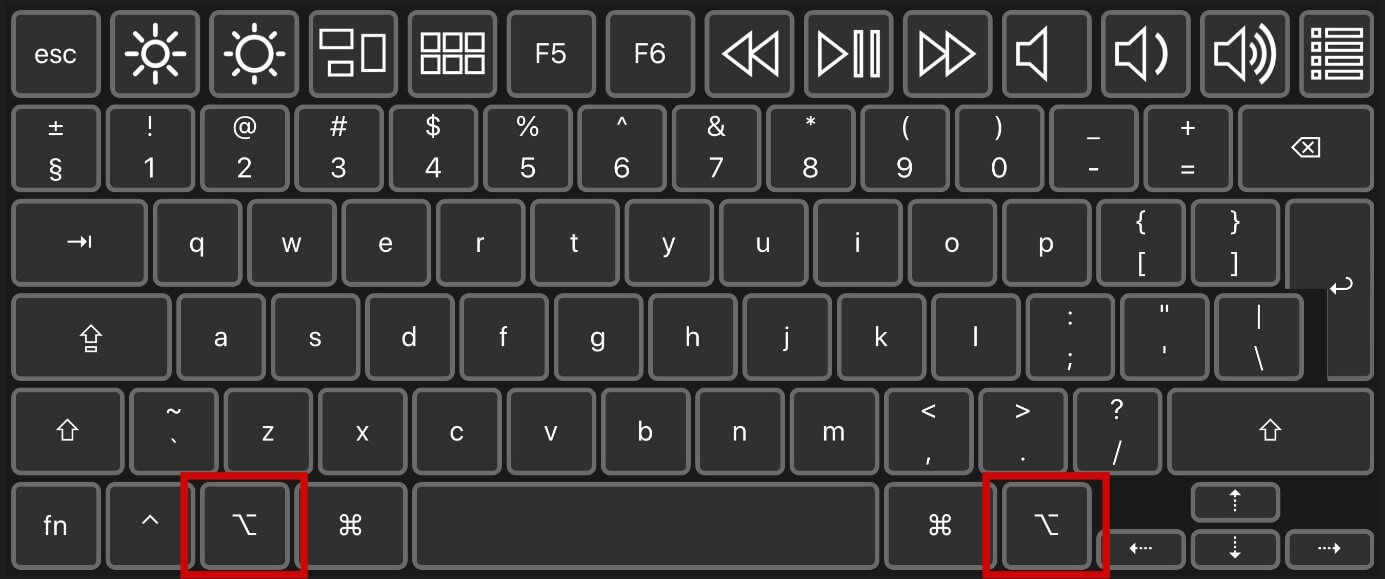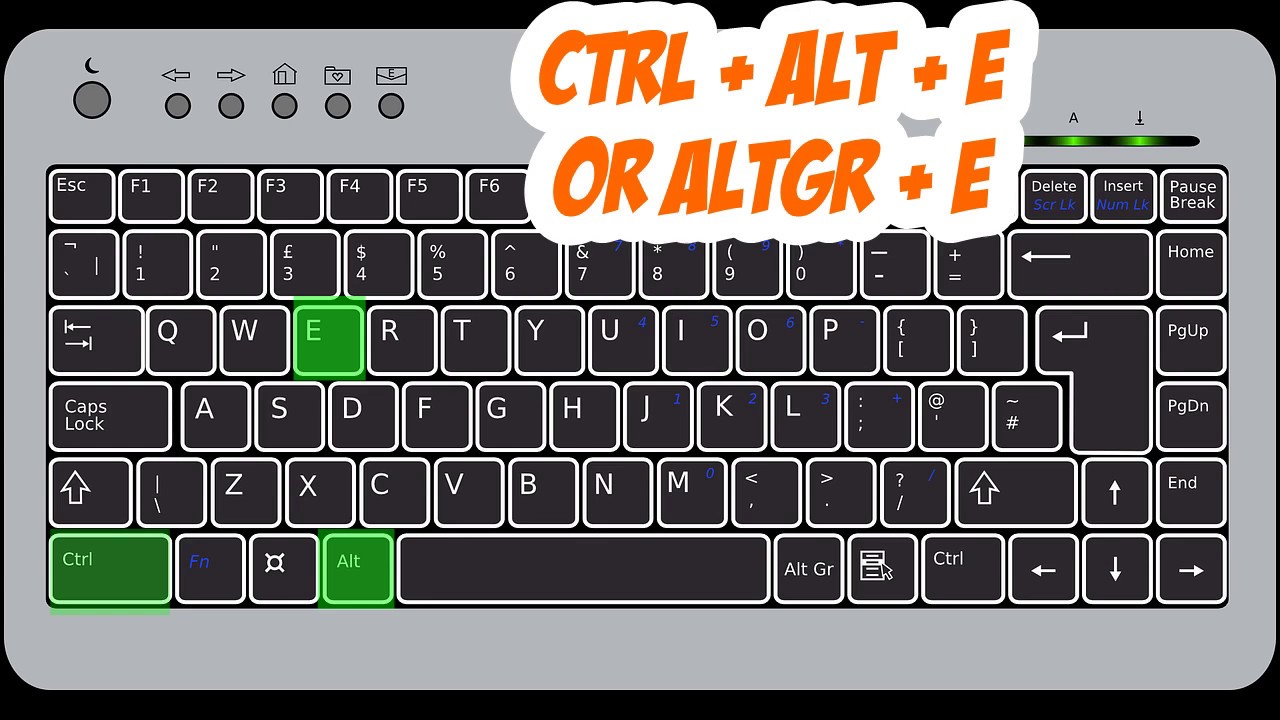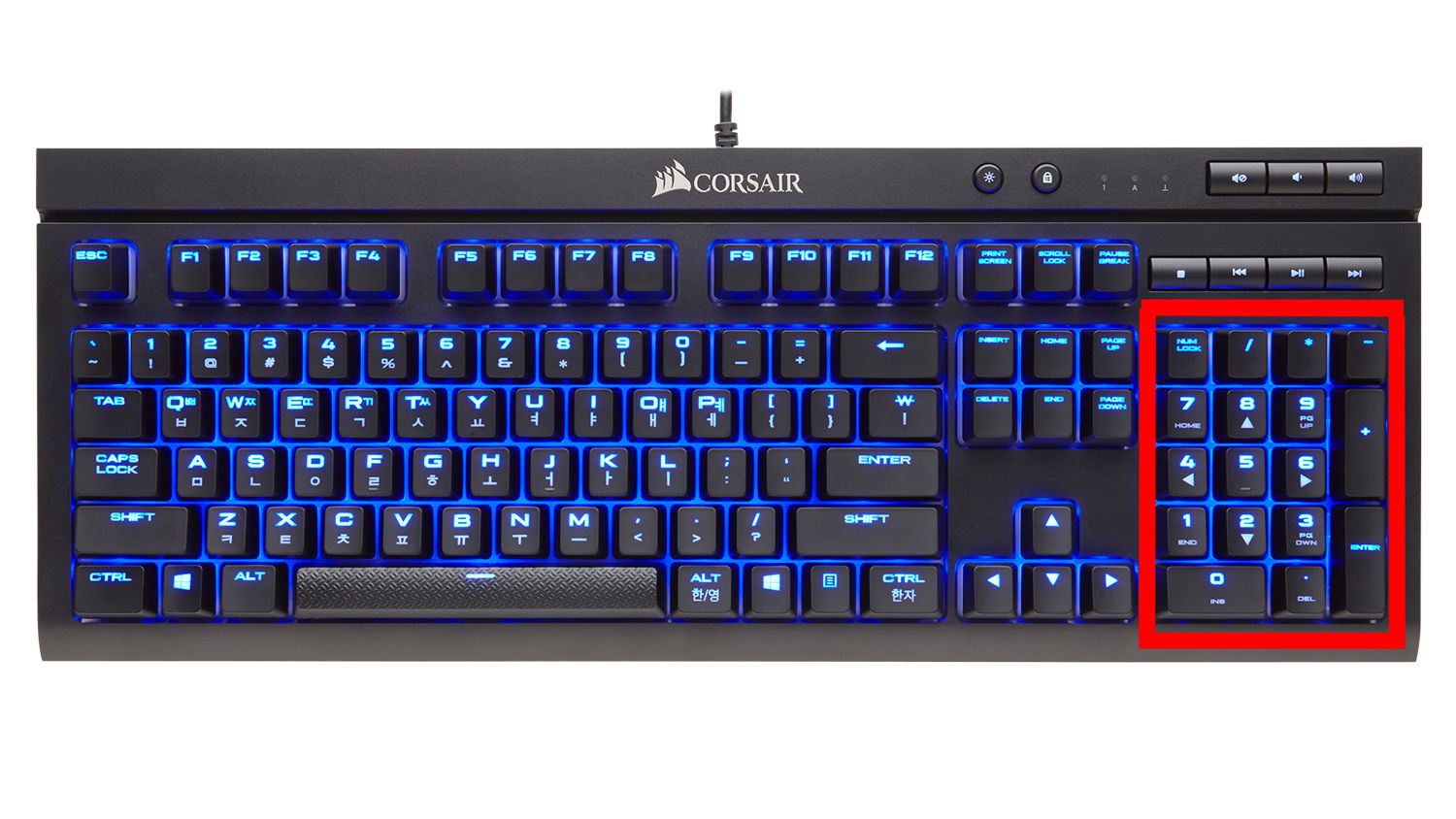Introduction
Welcome to our guide on understanding the ALT key on a Mac keyboard. If you’ve ever used a Mac computer, you may have noticed an additional key labeled “ALT” or “Option” on the keyboard. But what exactly does this key do and how can you make the most of it? In this article, we will explore the functionality of the ALT key on a Mac keyboard and how it can enhance your productivity and user experience.
The ALT key, also commonly referred to as the Option key, is a modifier key found on Mac keyboards. It is strategically placed near the Space bar and is used in combination with other keys to access a variety of functions and shortcuts. This often-overlooked key can provide a myriad of benefits and efficiency in your day-to-day usage of a Mac system.
Whether you’re a tech-savvy professional or a casual user, understanding the ALT key’s functionality can unlock a world of possibilities. From typing special characters to navigating menus, the ALT key serves as a valuable tool that helps you accomplish tasks more efficiently. By the end of this article, you’ll have a comprehensive understanding of how to leverage the ALT key on your Mac keyboard to its full potential.
So, let’s dive into the various functions and capabilities offered by the ALT key and explore the ways you can incorporate it into your workflow. Whether you’re a seasoned Mac user or new to the platform, this guide will surely enhance your understanding and utilization of this powerful key.
What is the ALT key?
The ALT key, also known as the Option key, is a modifier key found on Mac keyboards. It is denoted by the word “ALT” or a symbol resembling two horizontal lines connected by a vertical line. The ALT key is typically located on either side of the Space bar, providing comfortable access with both the right and left thumbs.
The ALT key plays a crucial role in expanding the functionality of your Mac keyboard. While it may not be as prominent as some of the other keys, its versatility makes it an essential component in performing a range of tasks.
Unlike traditional modifier keys like Shift and Control, the ALT key is primarily used for accessing alternative options or enabling specific functions within applications. Depending on the context, pressing the ALT key in combination with another key can trigger different actions, providing shortcuts and conveniences for users.
As a modifier key, the ALT key alters the behavior of other keys when pressed simultaneously. By holding down the ALT key and pressing another key, you can access hidden characters, navigate menus, activate shortcuts, and much more. Its multifunctionality makes it an invaluable tool for Mac users looking to streamline their workflow and improve productivity.
Now that we have a basic understanding of what the ALT key is, let’s explore its various functionalities and how you can use it to your advantage.
Functionality of the ALT key on a Mac keyboard
The ALT key on a Mac keyboard offers a wide range of functionalities that can enhance your productivity and user experience. Here are some of the key functions and features it provides:
- Accessing special characters: One of the primary uses of the ALT key is to type special characters and symbols. By pressing the ALT key along with specific character keys, you can access a vast array of symbols not readily available on the main keyboard. For example, pressing ALT+7 will produce a bullet point (•) symbol, while ALT+2 will display the trademark symbol (™).
- Navigating menus: The ALT key can be used to quickly navigate through menus within applications. Pressing the ALT key will activate the menu bar at the top of the screen, and each menu option will display an underlined letter. By pressing that letter, you can directly access the corresponding menu option without using the mouse.
- Enabling shortcuts: The ALT key is often used in combination with other keys to activate shortcuts or perform specific functions within applications. These shortcuts can vary depending on the software you’re using. For example, in Finder, pressing ALT+Command+D will show or hide the Dock, providing a quick way to access frequently used applications.
- Switching between language input sources: If you use multiple input sources or keyboard layouts on your Mac, the ALT key can be used to switch between them quickly. Holding down ALT and pressing the Space bar will cycle through the available input sources, allowing you to seamlessly switch between different languages or keyboard layouts.
- Customizing keyboard shortcuts: The ALT key can also be utilized to create custom keyboard shortcuts for specific actions or preferences. By navigating to the Keyboard preferences in System Preferences, you can assign the ALT key (or combinations involving ALT) to trigger specific functions across various applications, providing a personalized and efficient workflow.
These are just a few examples of the functionality provided by the ALT key on a Mac keyboard. The key’s versatility and customization options allow you to tailor your user experience to suit your specific needs and preferences.
Now that we’ve explored the various functions of the ALT key, let’s move on to learning how to use ALT key combinations for typing special characters.
Using ALT key combinations for special characters
The ALT key on a Mac keyboard provides a convenient way to type special characters and symbols that are not readily accessible on the main keyboard. By combining the ALT key with specific character keys, you can easily insert a wide range of special characters into your documents, emails, or other text input fields.
Here are some common ALT key combinations for typing special characters:
- ALT+1: Insert a smiley face symbol ☺
- ALT+2: Insert a trademark symbol ™
- ALT+3: Insert a heart symbol ♥
- ALT+4: Insert a diamond symbol ♦
- ALT+5: Insert a bullet point symbol •
- ALT+6: Insert a degree symbol °
- ALT+7: Insert a bullet point symbol •
- ALT+8: Insert a bullet point symbol •
- ALT+9: Insert an open bullet point symbol ◘
- ALT+0: Insert a closed bullet point symbol ○
These are just a few examples, and there are many more special characters and symbols that can be typed using ALT key combinations. To discover additional characters, you can experiment with different combinations or refer to character maps or online resources that provide comprehensive lists of ALT key combinations for special characters.
Remember, the specific characters that can be generated using the ALT key combinations may vary depending on the font and application you are using. Some characters may not be supported in certain programs or may appear differently when displayed or printed.
Now that you have a grasp of using ALT key combinations for special characters, let’s move on to exploring how the ALT key can be used for navigating menus and application shortcuts.
Using the ALT key for navigating menus and application shortcuts
The ALT key on a Mac keyboard can be a powerful tool for quickly navigating through menus and accessing application shortcuts without the need to use the mouse. By pressing the ALT key, you activate the menu bar at the top of the screen, and each menu option will display an underlined letter. By pressing that letter while holding down ALT, you can directly access the corresponding menu option.
Here’s how to use the ALT key for navigating menus and accessing application shortcuts:
- Accessing menu options: Press the ALT key to activate the menu bar at the top of the screen. As each menu option appears, you will notice that certain letters in the menu names are underlined. Press the corresponding letter while holding down ALT to access that menu option. For example, pressing ALT+F will open the File menu, and pressing ALT+T will open the Tools menu.
- Navigating submenus: Once you’ve accessed a menu, you can use the arrow keys to navigate through the available submenu options. Pressing the arrow keys will highlight different menu options, and pressing the Return or Enter key will select the highlighted option.
- Executing application shortcuts: Many applications have keyboard shortcuts associated with specific functions. By using the ALT key in combination with the designated shortcut keys, you can perform tasks quickly and efficiently. These shortcuts vary depending on the application you are using. For example, in Safari, pressing ALT+Command+F opens the Find field, allowing you to search for specific words or phrases on a webpage.
- Accessing context menus: In some applications, you can access context menus by right-clicking on an item. However, you can also achieve this with the keyboard by pressing and holding the ALT key while pressing the designated letter key associated with the context menu option you want to select.
By utilizing the ALT key for navigating menus and accessing application shortcuts, you can streamline your workflow and perform tasks more efficiently. It provides a convenient alternative to using the mouse and allows for quicker access to commonly used functions and options within applications.
Now that you understand how to use the ALT key for navigating menus and application shortcuts, let’s explore how you can customize the ALT key on your Mac keyboard.
Customizing the ALT key on a Mac keyboard
Customization is an essential aspect of personalizing your user experience on a Mac. While the ALT key itself cannot be customized, you have the ability to assign custom keyboard shortcuts that involve the ALT key to trigger specific functions across various applications.
Here’s how you can customize the ALT key on your Mac keyboard:
- Navigate to System Preferences: Click on the Apple menu at the top-left corner of your screen and select “System Preferences” from the dropdown menu. Alternatively, you can access System Preferences from the Dock or Spotlight search.
- Select “Keyboard”: In the System Preferences window, locate and click on the “Keyboard” icon. This will open the Keyboard preferences panel.
- Access “Shortcuts” tab: In the Keyboard preferences panel, click on the “Shortcuts” tab at the top. Here, you will find various options for customizing keyboard shortcuts.
- Choose “App Shortcuts”: In the left sidebar of the Shortcuts tab, select “App Shortcuts.” This section allows you to set custom shortcuts for specific applications.
- Click on the “+” button: At the bottom left of the window, click on the “+” button to add a new custom shortcut.
- Select the application: In the dropdown menu that appears, select the application for which you want to create a custom shortcut. You can choose from the list of open applications or click on “All Applications” to customize a shortcut that applies globally across all apps.
- Type in the menu title: In the “Menu Title” field, type in the exact name of the menu command you want to create a custom shortcut for. Make sure to enter the name exactly as it appears in the application’s menu.
- Assign the shortcut: Click on the “Keyboard Shortcut” field and press the keys you want to assign as the custom shortcut. You can include the ALT key in combination with other keys to trigger the function. Be cautious not to choose a combination that conflicts with existing shortcuts or system functions.
- Confirm the custom shortcut: Once you’ve entered the desired shortcut combination, click on the “Add” button to confirm and save your custom shortcut.
By following these steps, you can create personalized keyboard shortcuts involving the ALT key to perform specific functions within applications. This customization feature allows you to optimize your workflow and tailor your Mac experience to suit your individual needs.
Now that you know how to customize the ALT key on your Mac keyboard, you can explore the range of possibilities and fine-tune your workflow to boost productivity.
Conclusion
The ALT key on a Mac keyboard is a versatile tool that unlocks various functionalities and shortcuts, enhancing your productivity and user experience. Understanding how to utilize the ALT key can streamline your workflow and provide quick access to special characters, menu options, application shortcuts, and customized functions.
By using the ALT key in combination with other keys, you can easily type special characters that are not readily available on the main keyboard. Additionally, the ALT key enables you to navigate through menus and access application shortcuts, eliminating the need for mouse usage and saving time in performing tasks.
Moreover, the customization options available for the ALT key allow you to personalize your Mac experience by creating custom keyboard shortcuts for specific functions within applications. This feature provides a tailored workflow that suits your individual needs and optimizes your productivity.
Overall, the ALT key on a Mac keyboard is a powerful tool that expands the functionality of your keyboard, making it easier and more efficient to accomplish tasks. By harnessing its capabilities, you can unlock a world of possibilities and enhance your Mac usage experience.
So, take the time to explore and experiment with the ALT key on your Mac keyboard. Discover the special characters, navigate menus, access shortcuts, and customize your shortcuts to optimize your workflow. The ALT key is a valuable asset that can greatly enhance your productivity and efficiency in using your Mac.







